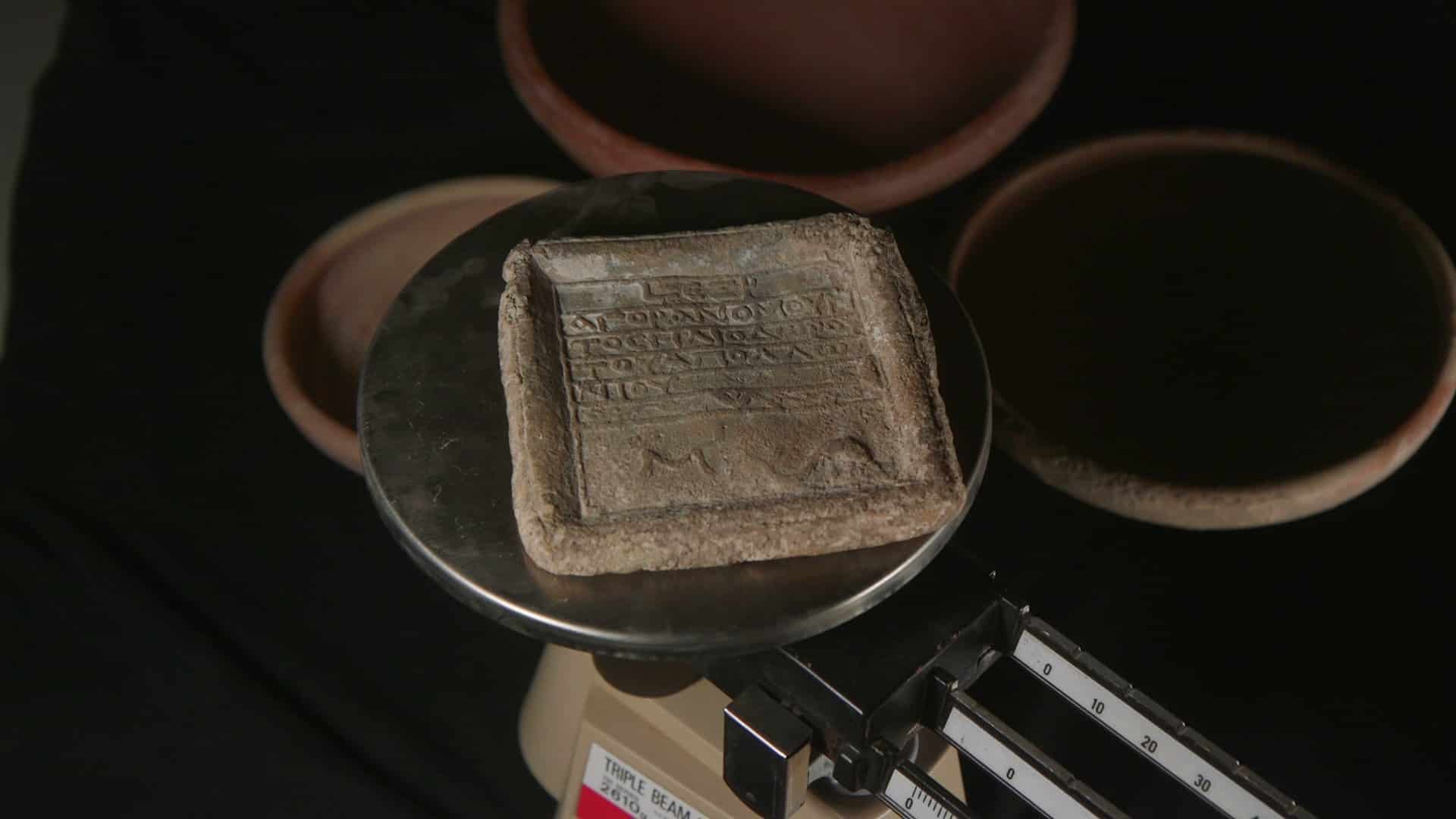
A rare ancient Greek weighing scale dating back more than 2,000 years has been seized in Jerusalem during an operation by the Israel Antiquities Authority’s Robbery Prevention Unit. Officials say the artifact, remarkably well preserved, provides a glimpse into trade practices and governance during the Hellenistic period.
The lead weight bears the inscription Heliodorus son of Apollonius, agoranomos. The agoranomos was the market official supervising weights and measures to prevent fraud in trade. Experts date the object to year 165 of the Seleucid era, or 147/148 BCE, when the region was under Hellenistic rule.
The Antiquities Authority confiscated the weight from an antiquities shop in Jerusalem after receiving intelligence on its presence. Inspectors questioned the shop owner to discover the middlemen and looters suspected of removing it from an archaeological site.
Precision and symbolism
The scale weight reflects its role with remarkable accuracy. It measures one mina, the common standard of the time, equal to 100 Greek drachmas. A mark resembling the Greek letter “M” appears on the piece, possibly representing “mina.”
Alongside the inscription, a dolphin design is visible. Archaeologists are examining the motif, hoping it may indicate the city where the weight originated.
Names with cultural meaning
Researcher Ido Tsangin of the Antiquities Authority stated that the names Heliodorus and Apollonius highlight a Hellenized population. Both names are associated with sun gods in Greek mythology—Helios and Apollo—and point to ties with the wider Hellenistic world. Such names were common in Idumea, where the local god Kos was linked to the Greek deities.

Maresha, Idumea’s capital during the Hellenistic era, has yielded several finds tied to the office of agoranomos. A weight dated 170–169 BCE bears the name Apollonius. The seized weight from 147/148 BCE records his son, Heliodorus. Another weight and vessel from 143–142 BCE mentions Antipater, son of Heliodorus.
Tsangin explained that these artifacts suggest a possible family line of officials overseeing trade in Maresha. Public offices often passed from father to son, though not always. Because these names were common, he cautioned that the piece cannot yet be confirmed as originating from Maresha. But if proven, it would offer rare insight into governance in the ancient world.
Wider history and warnings
The name Heliodorus also appears in a Greek inscription dated 178 BCE found in the Maresha region. That figure served as finance minister under King Seleucus IV and is cited in 2 Maccabees 3 as the envoy sent to seize funds from Jerusalem’s Temple treasury, an event many historians link to the sparks of the Hasmonean revolt.
Ilan Haddad, head of Antiquities Trade Supervision at the Antiquities Authority, said looting strips away vital history. He explained that if the artifact had been uncovered in an official excavation, archaeologists would know far more about its context. Now, its origins can only be guessed.
He noted that dealing in items of unknown provenance is a criminal offense, saying the authority remains committed to blocking illicit artifacts from reaching the market, pursuing looters, and bringing them to justice.


